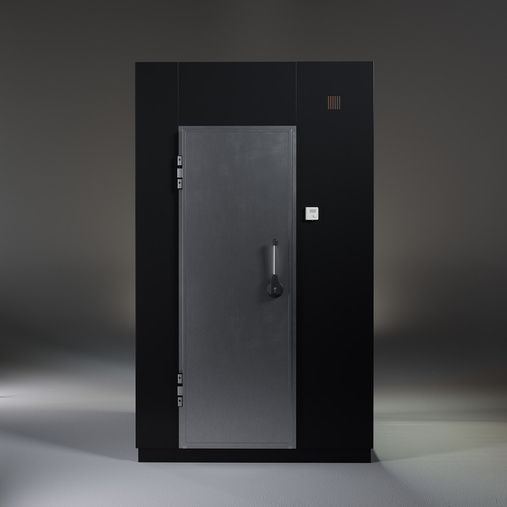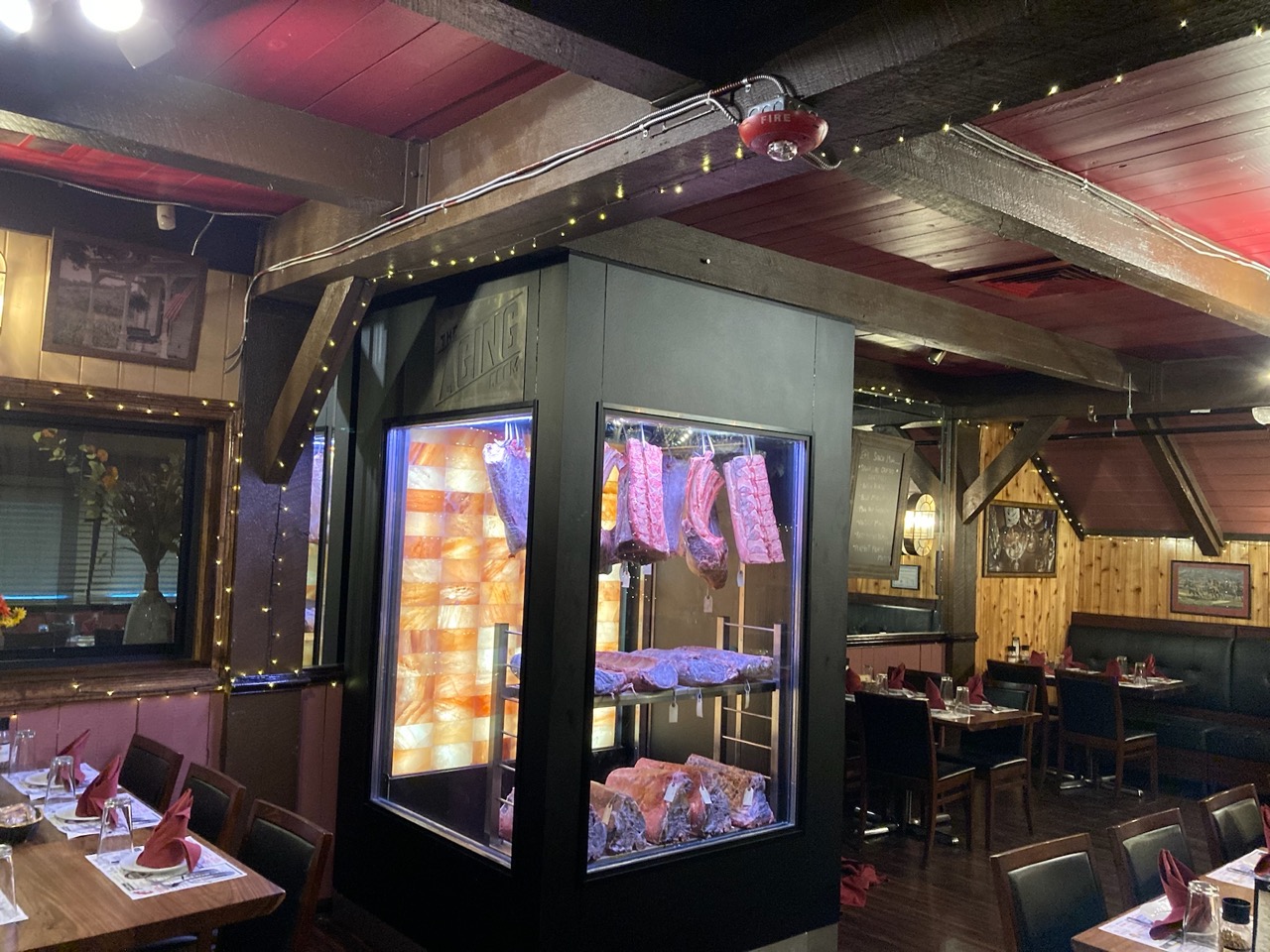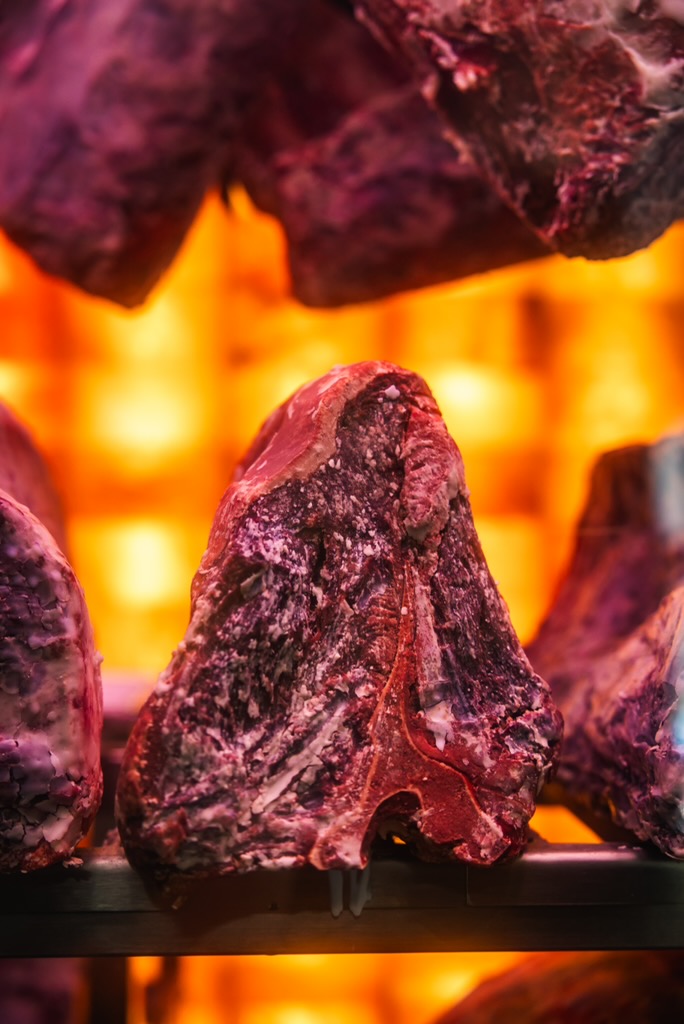
Methods for Producing Healthy Premium Meats
As amazing as steak is, not all steak is made equal, and uses different aging or preservation processes. Steak is aged at restaurants, grocery stores, and butchers for the most part, and they are either dry-aged, wet-aged, or recently gas-packed. In this article, we will go over each of the different methods used for aging beef.
Dry-Aged Beef
Dry-aging beef is a slow process designed to produce the most tender and flavorful cut of steak possible. During the process, the beef is placed in a carefully controlled environment under specific temperatures, humidity levels, and air pressure levels.
When the meat is placed in a controlled, dry-aging chamber, the moisture is pulled out from the beef and the natural enzymes in the beef begin to slowly break down the muscle over time. This is what creates the staple tenderness dry-aged beef is known for. Once the surface of the meat dries, the inside stays moist and red. The other part of the dry-aging process is the environmental factors that take place due to the balanced, controlled temperature levels that allow the cut to age safely. This enhances the umami, rich flavor that is also associated with dry-aged beef.
Dry-aged beef is a highly prized commodity at many restaurants and retail shops. Because of the many factors that come into play, it’s important that dry-aged beef is properly aged within a chamber that can control the temperature and environment in which it ages. Because of the longer storage time in these special chambers and the weight loss due to water loss and trimming, it commands a premium price. Customers can only really find dry-aged beef these days at gourmet grocery stores, butcheries, and high-end steak houses.
Wet-Aged Beef
Wet-aging beef became popular shortly after the development of plastics. During the wet-aging process, steak is cut into portioned pieces and vacuum-sealed inside a plastic bag. Kept at a controlled temperature like dry-aging, it typically remains in the plastic bag to age between 4-10 days.
During the wet-aging process, the moisture is trapped within the bag, breaking down the fibers and increasing the tenderness without reducing the moisture. Because the aging process occurs in the bag, the ripening gasses are trapped, which gives the meat a more sour taste. Because of this process's common use in grocery stores, the average consumer is accustomed to this type of taste and associates it with steak.

Gas Packing Beef
Recently, there has been a new, unsafe trend that has emerged in the beef-aging industry called gas packing. Most meat found on grocery store shelves these days is gas-packed with carbon monoxide, which gives the illusion that the meat is fresher, even when it has gone bad. Unlike dry-aging, it does not enhance the tenderness or flavor of the beef. Instead, it is a process simply designed to decrease costs and increase profits while fooling customers into thinking it is a “fresh” cut. With gas packing, the beef maintains a bright red color instead of turning the dull brown color from oxidation.
Many retailers have embraced gas packing meat because not only does it lower their operating costs, but it extends the shelf life of beef up to 14 days. This means that they don’t have to buy expensive coolers or employ skilled butchers, and they can keep meat on the shelf longer while convincing customers that it looks fresh. Unfortunately, to most customers, the bright red color signifies freshness, even if it may be far from the truth.

Why Dry-Aged Beef Makes a Difference
There are different ways that beef can be aged. In the process, the retail cuts are put in environments that allow them to age without growing any harmful bacteria or mold, but instead, grow healthy bacteria that helps enhance flavors and make the beef more tenderized. Aged beef is known for its delicious flavors and satisfying texture, making it the perfect meal.
Why Use a Dry-Aging Chamber
The average consumer has been conditioned to accept practices like gas packing. They’ve become accustomed to buying cheap, mass-produced beef that is actually unhealthy for them. As long as consumers keep buying cheap beef, this trend will continue. But, with the help of The Aging Chamber, restaurants, retail shops, and butchers alike can help consumers take notice of what they’re actually buying.
If you want to offer your customers a premium beef experience, the best and healthiest option is allowing them to experience dry-aged meat. Properly aged and stored beef is superior to unhealthy practices like gas packing, especially when used with the right equipment. Dry-aging meat in a chamber is an age-old, proven, natural process that is better for the consumer.
The Benefits of The Aging Room Dry-Age Chamber
With the right dry-aging chamber with the right features, you’ll be able to create a rich, flavorful steak that not only helps educate your customers but keeps them coming back for more. The Aging Room Chamber helps you accomplish a perfect, premium aged beef using accurate climate control equipment to create a natural microclimate for steaks to age. It also uses a lined, Himalayan salt wall that not only creates a beautiful presentation but also plays a crucial role in the dry-aging process. It naturally kills off bacteria, eliminating the need for any harmful chemicals or UV lights, enriching the microclimate to create its unique, rich flavor. The salt can also prevent the meat from forming a thick crust, preventing any loss of meat and still appealing to their visual sense just like those grocery stores.
Premium equipment like The Aging Room Chamber produces premium, healthy meat for your customers. Learn more about The Aging Room Chamber and how you can utilize it in your shop or restaurant today.
Other news
-
 News
Why Full-System Certification Matters in Dry Aging Equipment — And What Sets The Aging Room® Apart
18 Jul 2025
News
Why Full-System Certification Matters in Dry Aging Equipment — And What Sets The Aging Room® Apart
18 Jul 2025
-
 News
Understanding the Art of Aging: How Dry Aging with Himalayan Salt Transforms Meat Quality
01 Jul 2025
News
Understanding the Art of Aging: How Dry Aging with Himalayan Salt Transforms Meat Quality
01 Jul 2025
-
 News
UV Light vs. Himalayan Salt in Dry Aging Meat: What Really Matters for Flavor and Quality
03 Jun 2025
News
UV Light vs. Himalayan Salt in Dry Aging Meat: What Really Matters for Flavor and Quality
03 Jun 2025